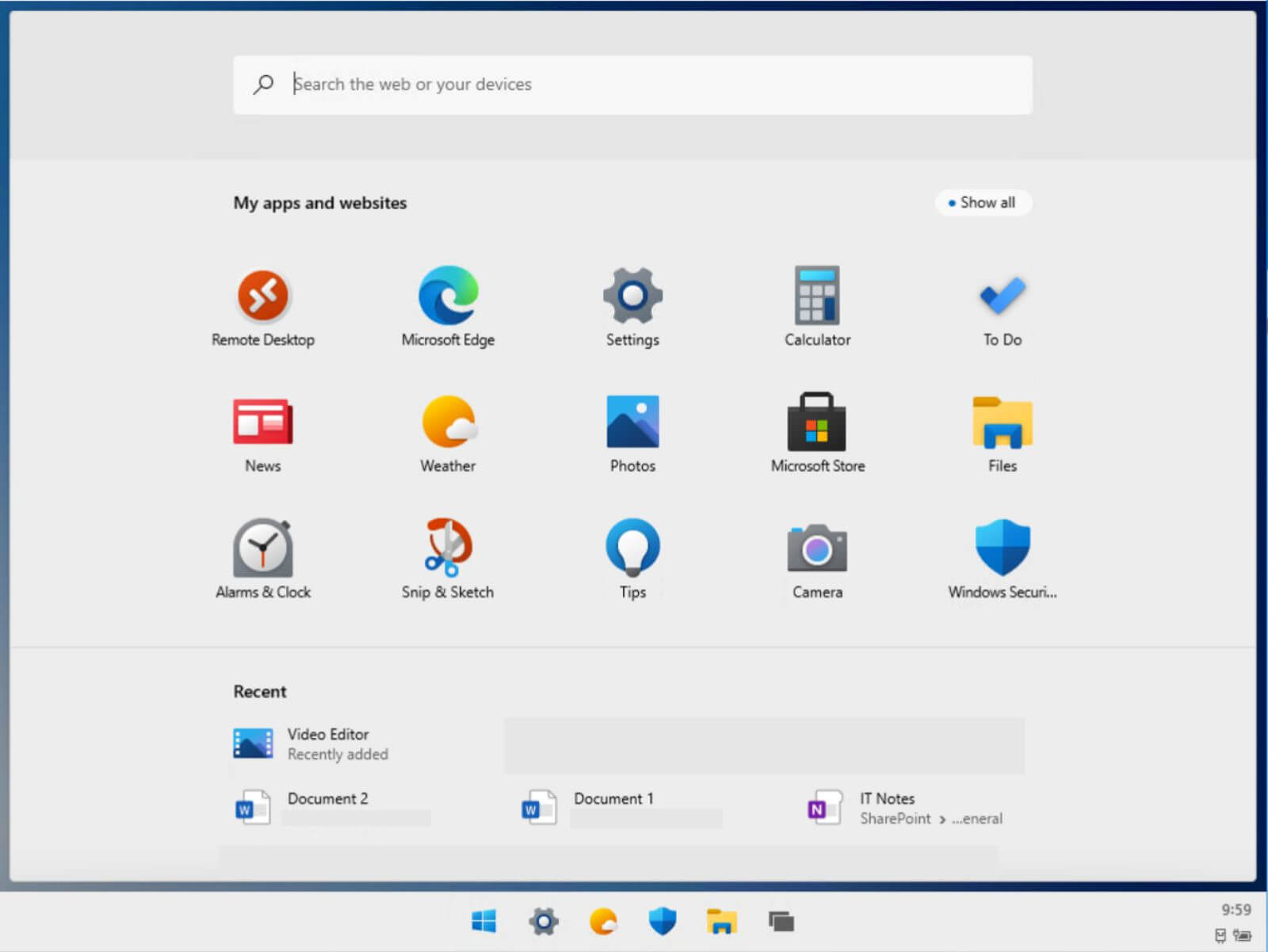Windows 10X has leaked onto the web, and it gives us a glance at the new interface, features, and changes that Microsoft is expected to ship in the coming months. (Also, watch this video that demos the new operating system.)
What’s Windows 10X
In a nutshell, Windows 10X is a new lightweight variant of Windows 10 originally planned for dual-screen and foldable devices. However, it has been reworked for single-screen devices (at least initially). Also, this is not a new version that you will download to upgrade your computer. Instead, it is another expression for new laptops and other devices to compete with Chrome OS.
The leaked nearly-final version of Windows 10X reveals a completely redesigned operating system that looks simple and more visually appealing, web-centric, and very similar to Chrome OS.
Windows 10X new setup
The redesign starts from the moment you click the power button. As soon as it boots, you will notice a new loading circle with a smooth animation instead of the circling dots.
If you are setting up the device for the first time, you will see a new white screen with a Windows logo animation, and then the redesigned out-of-box experience (OOBE) will appear.
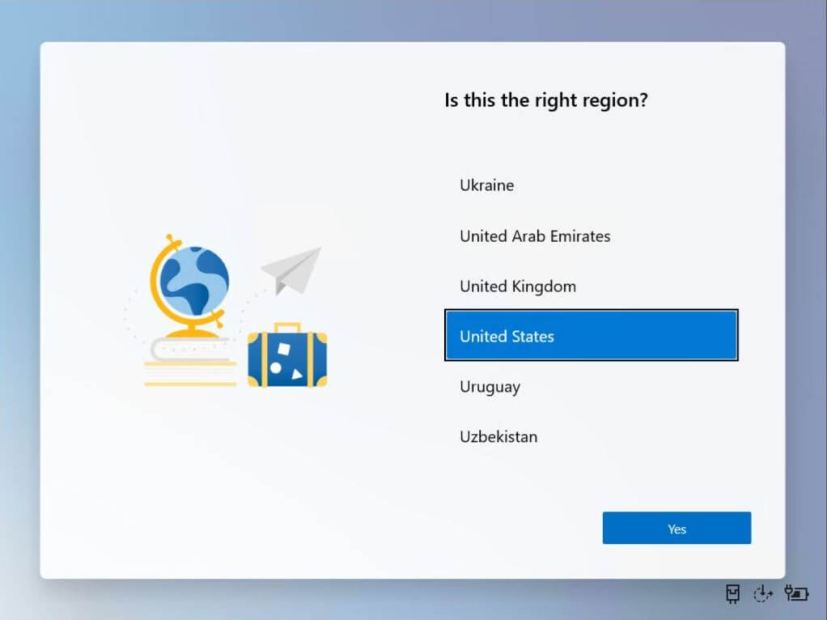
The experience is now a white window with rounded corners instead of a stretched full-screen interface with a blue background.
Aside from the new visuals, the setup process looks similar to the old experience. You get the option to create an account, choose your privacy settings, enable Cortana, etc. Also, through the process, as you move between the stages, you will see new animations related to the setting that makes it a more friendly experience.
Windows 10X new Start menu, Action Center, Desktop
Once on the desktop, it will feel very minimalistic since you won’t find a lot in this release, but you will notice that Microsoft is trying to go for an experience designed for web apps rather than traditional apps.
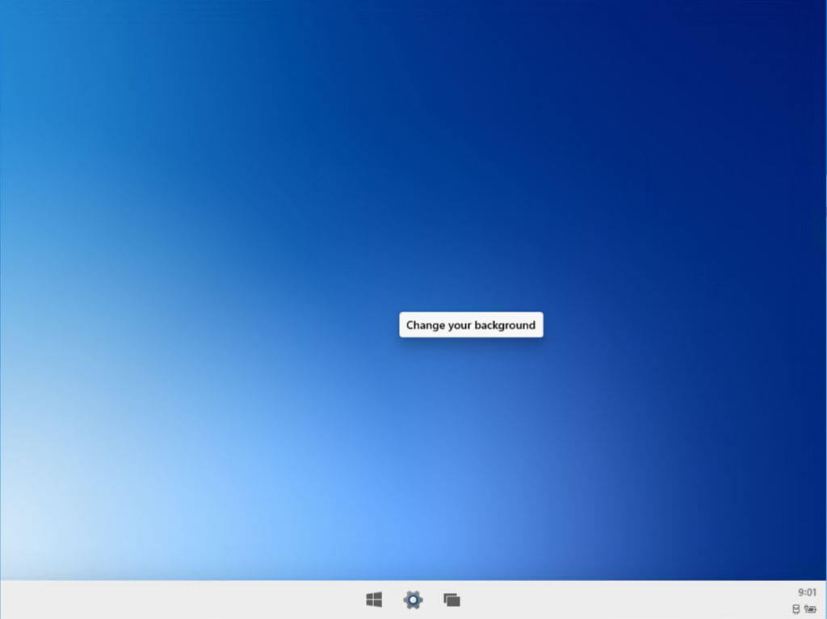
Unlike the desktop version of Windows 10, the new operating system has a new taskbar that places all the apps and the Start button front and center and a simpler notification area without a lot of icons.
You will also find new animations for closing and opening apps and hovering over thumbnails. However, you cannot place icons on the desktop, and the desktop context menu only gives you access to change the desktop background through the Settings app.

The Action Center has also been redesigned. It is just a flyout with a new design language that integrates the power options, profile menu, access to Settings, battery information, and more. You will also notice rounded corners for flyouts and buttons across the experience, which is very different from the design we usually see in the desktop version.
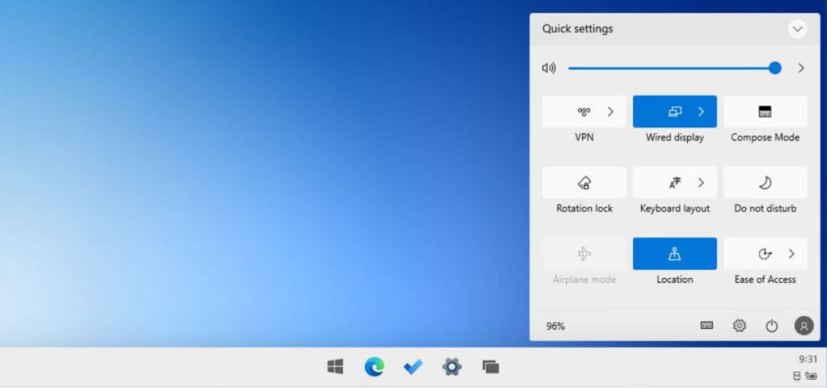
Windows 10X also includes a new Start menu that ditches the Live Tiles in favor of traditional icons with a search box at the top and a list of recent documents at the bottom.
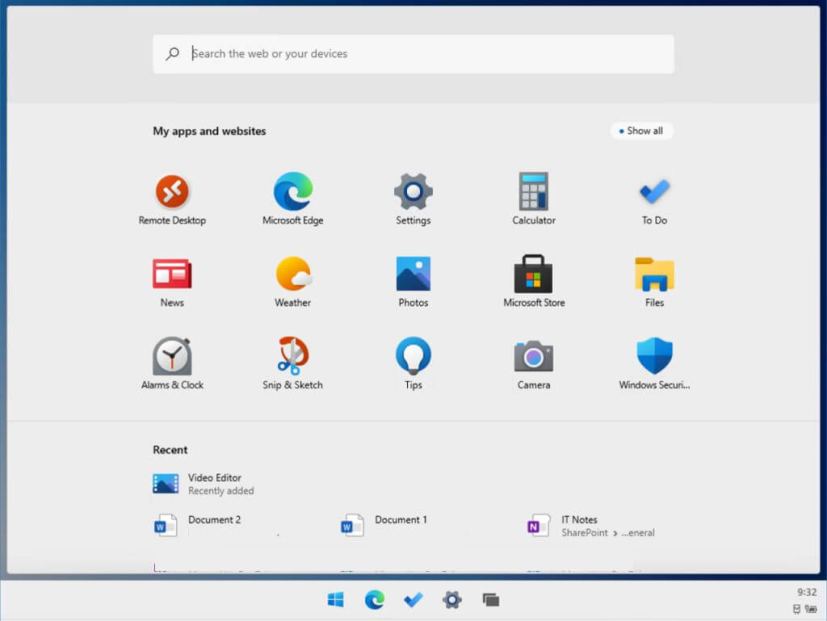
When launching an application, it appears you will be limited to running apps in full screen since the maximize button is no longer available, and you cannot resize any of the windows. However, you can snap apps to the left and right to multitask with two apps simultaneously.
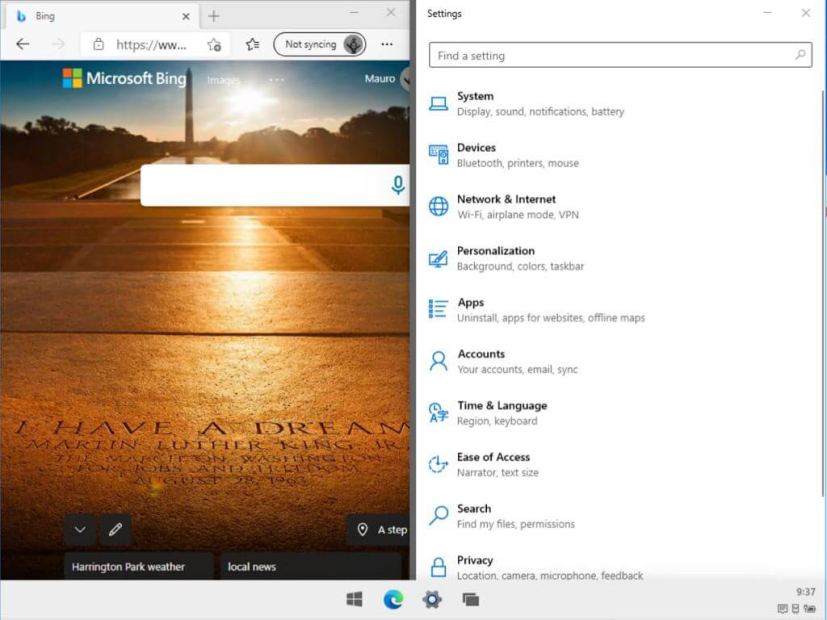
At least initially, the new operating system will only run web apps and those apps from Microsoft Store, which means that you won’t be able to install traditional desktop (win32) apps, including Office apps. You can download executables, but the installation won’t launch. Also, many system applications have been removed, including Notepad, Command Prompt, PowerShell, Control Panel, and tools like Task Manager, and much more.
Modern File Explorer
Then there is the new File Explorer, which has been designed primarily to access OneDrive content. You can still access local files, but it is limited to the “Downloads” folder, and you cannot access system files. There is even a settings page, but there are no customization options at this time.
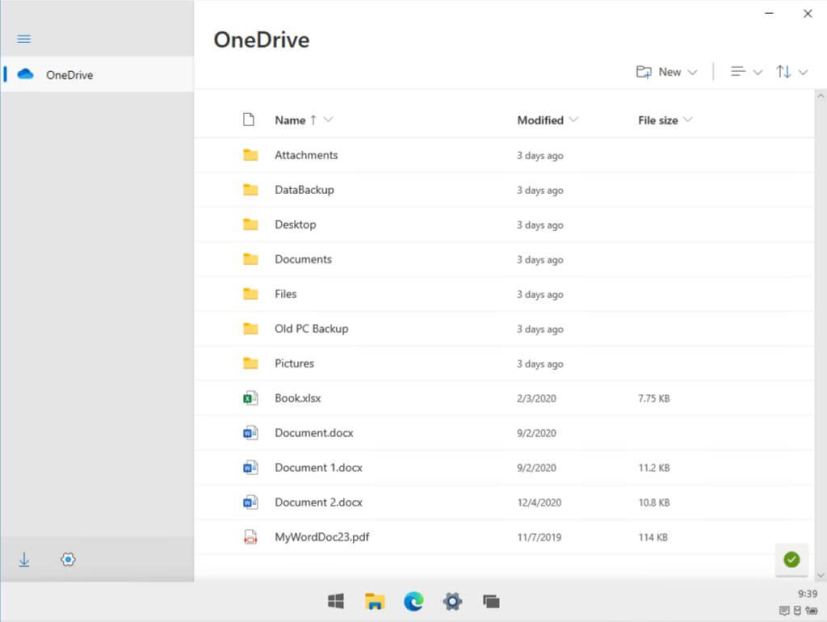
Also, since this is a modern application, the “save as” and other related dialog boxes have now been modernized as well.
Windows 10X Settings app
The Settings app remains the same as the interface you see today on Windows 10, but it is a more simplified version that lacks many features and is tweaked differently.
For instance, the Network & Internet page includes the basic settings to manage the network adapters, but you will not find options to configure a proxy or dial-up connection. Since the legacy components are no longer available, there are not options to access settings through Control Panel.
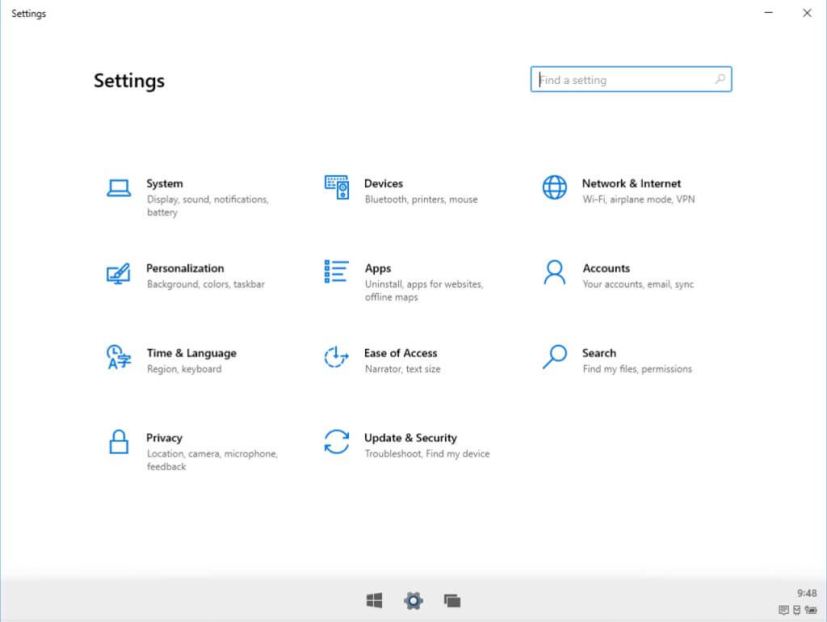
Windows 10X also does not include options to link your phone, change Gaming settings, and the Display settings do not even include options to configure scale and layout.
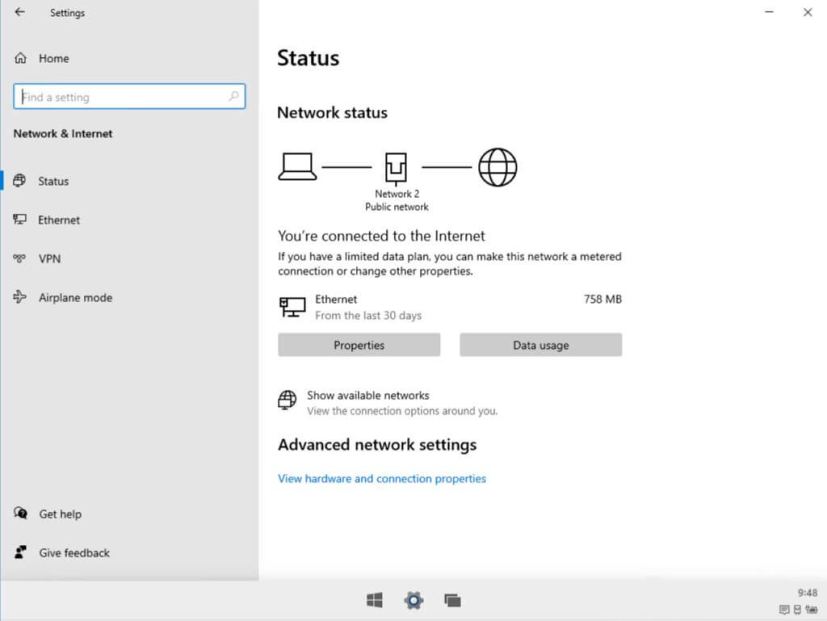
New way to Shutdown or Restart
If you want to shut down the device, you now have to open Action Center and click the Power button to bring up a menu with Shutdown, Restart, or Cancel.
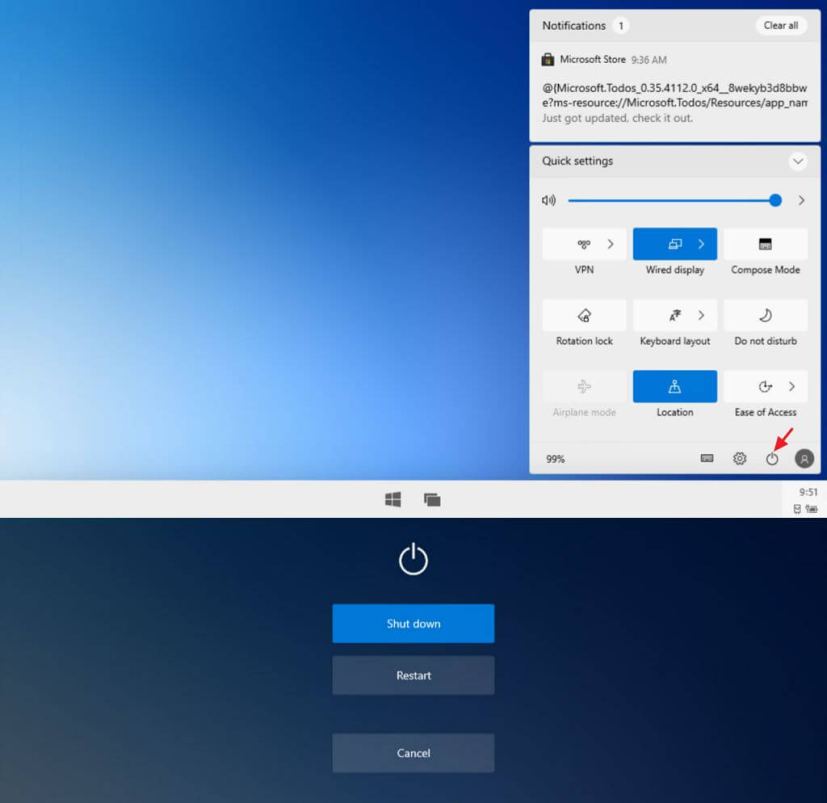
Simplified Task View
As part of the experience, you can access Task View to switch between applications, but this is a more simplified version since there is no Timeline, and “virtual desktops” does not seem to be a feature of Windows 10X.
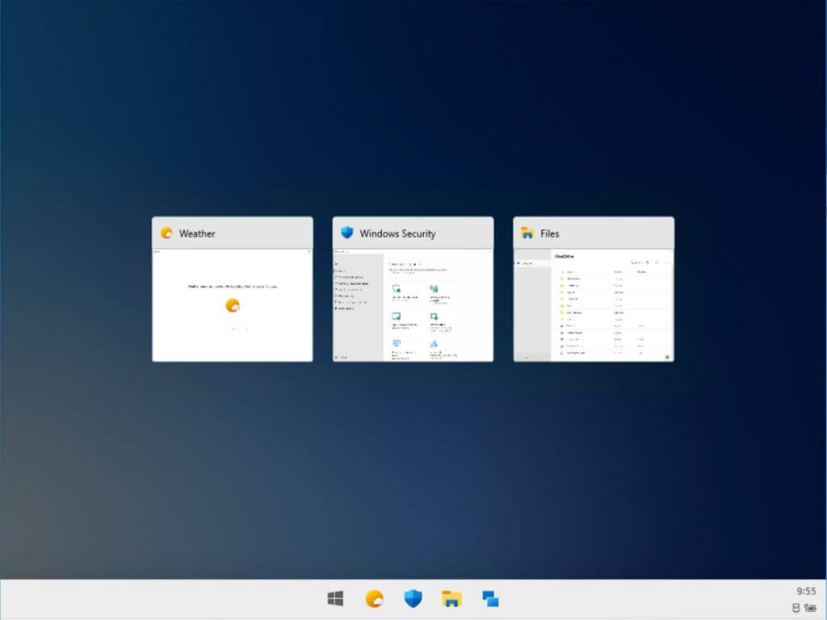
Although Windows 10X is being touted as a new variant of Windows 10, it does not feel like Windows anymore. This new version is very simple, more visually appealing, and it feels more like a window to the web rather than a system to use desktop applications, which makes it clear that Microsoft is trying to go after the Chrome OS market and low-end devices. It is basically a new system, and the company seems to have used a different name to differentiate the two operating systems even further to avoid possible confusion.
Windows 10X is expected to launch at some point in 2021, but Microsoft has yet to confirm the release date and the devices that will initially ship with this new streamlined version of the operating system.

